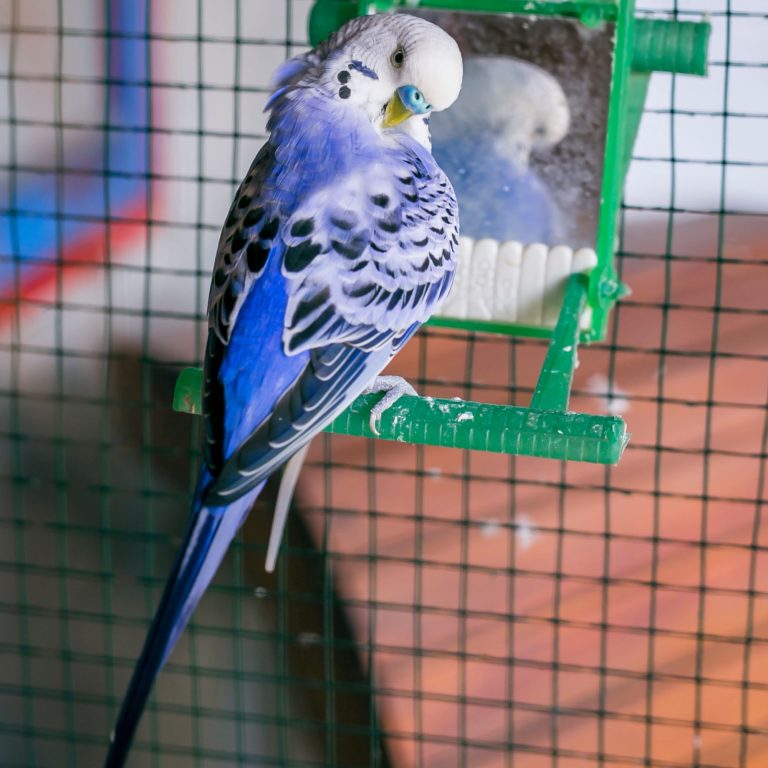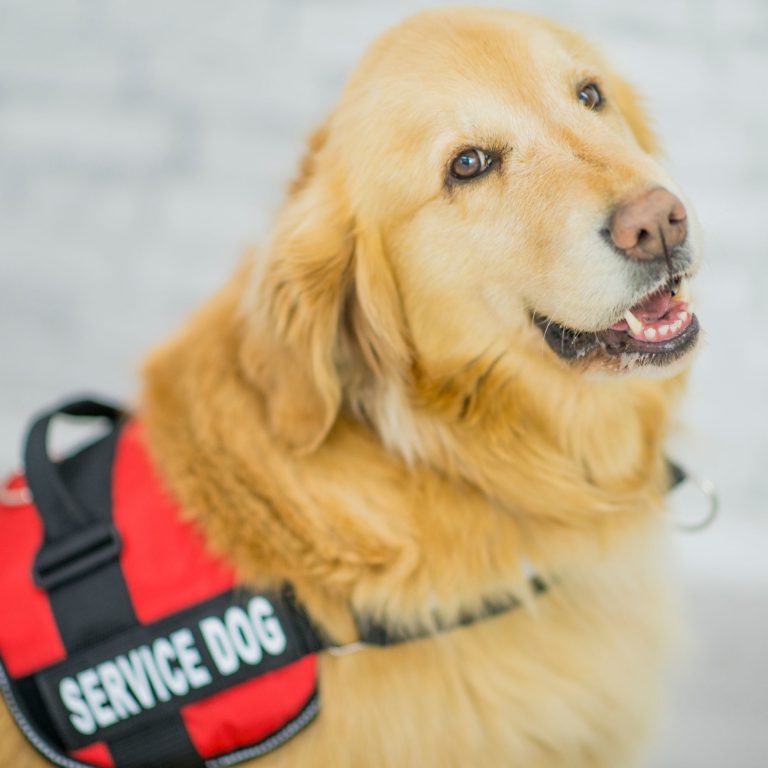No More Lost Birds: The Ultimate Parrot Tracking Device Guide
Importance of Parrot Tracking Devices
When it comes to the well-being and safety of your beloved parrot, parrot tracking devices play a crucial role. These devices offer an effective solution for keeping track of your parrot’s whereabouts, providing peace of mind and an additional layer of protection. Understanding the need for parrot tracking and exploring the benefits of using GPS trackers for parrots can help you make an informed decision to enhance your parrot’s safety.
Understanding the Need for Parrot Tracking
Parrots are curious creatures known for their intelligence and ability to explore their surroundings. However, this adventurous nature can sometimes lead to unexpected situations where parrots may accidentally escape or wander off. Losing a parrot can be a distressing experience for both the owner and the bird. Having a parrot tracking device can significantly increase the chances of quickly locating and safely retrieving your parrot.
In addition to accidental escapes, there are other scenarios where parrot tracking becomes essential. For example, if you plan to take your parrot outdoors or on trips, a tracking device can ensure that they don’t get lost in unfamiliar environments. Furthermore, parrot tracking devices can also assist in the recovery of stolen parrots, as they can be easily identified and located with the help of GPS technology.
Benefits of Using GPS Trackers for Parrots
GPS trackers offer a range of benefits when it comes to parrot tracking. Here are a few key advantages:
-
Real-Time Location Monitoring: GPS trackers provide real-time location updates, allowing you to know the exact whereabouts of your parrot at any given time. This feature is particularly valuable in case of an escape or if your parrot flies away.
-
Enhanced Safety and Security: With a GPS tracker attached to your parrot, you can quickly locate them if they get lost or stolen. This ensures their safety and increases the chances of a swift reunion.
-
Geofencing Capabilities: Many GPS trackers offer geofencing features, allowing you to set virtual boundaries for your parrot. If your parrot crosses these boundaries, you’ll receive an alert, enabling you to take immediate action.
-
Historical Tracking Data: Some GPS trackers store historical tracking data, offering insights into your parrot’s patterns and behavior. This can be helpful in understanding their habits and making informed decisions about their care.
To make the most of a parrot tracking device, it’s important to choose a high-quality tracker that meets your specific needs. Consider factors such as device size and weight, battery life, and range coverage when selecting a GPS tracker. For more information on choosing the right GPS tracker for your parrot, check out our article on gps tracker for parrots.
By investing in a reliable parrot tracking device, you can enjoy the peace of mind that comes with knowing your feathered friend is safe and secure. Remember to also explore companion tools like bird tracking apps to complement your parrot tracking device and ensure a comprehensive tracking system. Prioritize the safety and well-being of your parrot by utilizing the benefits offered by parrot tracking devices.
How Parrot Tracking Devices Work
If you’re considering using a parrot tracking device to ensure the safety and well-being of your feathered friend, it’s important to understand how these devices function and the features they offer. Parrot tracking devices utilize GPS technology along with additional functionalities to track and monitor your parrot’s location.
GPS Technology in Parrot Tracking Devices
The core technology behind parrot tracking devices is Global Positioning System (GPS). GPS relies on a network of satellites to determine the precise location of the device. The parrot tracking device is equipped with a GPS receiver that communicates with these satellites to acquire accurate location data.
Once the GPS receiver determines the device’s location, it can transmit this information to a connected device, such as a smartphone or computer. This allows you to track your parrot’s whereabouts in real-time or receive periodic updates on its location.
Other Features and Functionality
In addition to GPS technology, many parrot tracking devices offer a range of other features and functionalities to enhance the tracking experience. Some common features include:
-
Geofencing: This feature allows you to set virtual boundaries or “safe zones” for your parrot. If your parrot strays beyond these boundaries, you’ll receive an alert, enabling you to take immediate action.
-
Activity Monitoring: Some tracking devices can provide insights into your parrot’s activity levels, such as flying distance or time spent in different locations. This information can be valuable for understanding your parrot’s behavior and overall well-being.
-
Battery Life and Charging: The battery life of a parrot tracking device is an important consideration. Longer battery life ensures that you can track your parrot for extended periods without interruption. Some devices offer rechargeable batteries or alternative power options to keep the device operational.
-
Water Resistance: Parrot tracking devices that are water-resistant or waterproof are ideal for parrots that enjoy bathing or flying in wet conditions. These devices can withstand exposure to water, ensuring their functionality is not compromised.
-
Compatibility and Connectivity: Parrot tracking devices may require a companion mobile app or web portal to access tracking data. Ensure that the device you choose is compatible with your devices and offers a seamless connectivity experience.
By understanding the GPS technology and additional features of parrot tracking devices, you can make an informed choice when selecting the right device for your parrot. Remember to consider factors such as the size of the device, battery life, and range coverage to ensure it meets your specific requirements. For more information on parrot tracking devices, check out our article on gps tracker for parrots.
Types of Parrot Tracking Devices
When it comes to tracking your parrot’s whereabouts, there are several types of tracking devices available in the market. Each type offers unique features and benefits. In this section, we will explore three common types of parrot tracking devices: collar trackers, wing band trackers, and backpack trackers.
Collar Trackers
Collar trackers are designed to be worn around your parrot’s neck like a collar. These trackers usually consist of a lightweight device that attaches securely to a specially designed collar. The device is equipped with GPS technology and other features to track your parrot’s location accurately.
Collar trackers are an excellent option for parrots that are comfortable wearing a collar. They provide real-time location updates, allowing you to monitor your parrot’s movements and quickly locate them if they happen to fly away. Some collar trackers also offer additional features such as activity monitoring and geo-fencing capabilities.
Wing Band Trackers
Wing band trackers are another type of tracking device commonly used for parrots. These trackers are designed to be attached to your parrot’s wing band, which is a small band typically worn on the bird’s leg. The tracker is securely fastened to the wing band, ensuring it stays in place during your parrot’s daily activities.
Wing band trackers offer the advantage of being lightweight and unobtrusive. They are a popular choice for parrot owners who prefer a more discreet tracking option. Like collar trackers, wing band trackers utilize GPS technology to provide accurate location information. Some wing band trackers also offer additional features such as temperature monitoring and tamper alerts.
Backpack Trackers
Backpack trackers are a unique type of parrot tracking device that can be attached to a specially designed backpack or harness worn by your parrot. These trackers are lightweight, compact, and designed to be comfortable for your parrot to wear. The backpack or harness is designed to securely hold the tracking device while allowing your parrot to move freely.
Backpack trackers offer a convenient and versatile tracking solution. They are suitable for parrots that are comfortable wearing a backpack or harness and are often used during outdoor activities or training sessions. These trackers typically utilize GPS technology and may offer additional features such as activity monitoring and waterproofing.
| Type of Tracker | Suitable for Parrots | Features |
|---|---|---|
| Collar Trackers | Parrots comfortable wearing a collar | Real-time location updates, activity monitoring, geo-fencing |
| Wing Band Trackers | Parrots comfortable wearing a wing band | Lightweight, discreet, GPS tracking, temperature monitoring, tamper alerts |
| Backpack Trackers | Parrots comfortable wearing a backpack or harness | Lightweight, versatile, GPS tracking, activity monitoring, waterproof |
When choosing a parrot tracking device, it’s important to consider your parrot’s comfort, the features offered, and your specific tracking needs. Remember to explore different options and select a device that suits both your parrot’s well-being and your peace of mind. For more information on parrot tracking devices, check out our article on gps tracker for parrots.
Factors to Consider When Choosing a Parrot Tracking Device
When selecting a parrot tracking device, it’s important to consider several factors to ensure that you choose the right one for your feathered friend. Here are three key factors to keep in mind:
Size and Weight of the Device
The size and weight of the tracking device are important considerations to ensure the comfort and safety of your parrot. The device should be lightweight and compact enough to be securely attached to your parrot without causing any discomfort or hindering their movement. It’s crucial to choose a device that is suitable for the size and species of your parrot to ensure a proper fit.
Battery Life and Charging Options
Battery life is a critical factor when it comes to tracking devices. You want a device that has a long-lasting battery to ensure continuous monitoring of your parrot’s whereabouts. Look for devices that offer extended battery life so that you don’t have to worry about frequent recharging or the device running out of power at a crucial moment.
Consider the charging options available for the tracking device as well. Some devices may require a specific charging cable or docking station, while others may offer more versatile charging options like USB or wireless charging. Make sure to choose a device that aligns with your preferences and convenience.
Range and Coverage
The range and coverage of the tracking device are essential to ensure an effective tracking experience. Different devices may have varying ranges, which determine how far away you can be from your parrot and still receive accurate location updates. Additionally, consider the coverage area of the device, as some may provide better tracking capabilities in urban areas compared to remote or rural locations.
To get the most out of your parrot tracking device, it’s important to understand the specifications and limitations of the range and coverage. This will help you determine if the device is suitable for your specific needs and environment. For more information on GPS tracking devices for parrots, check out our article on gps tracker for parrots.
By considering the size and weight of the device, battery life and charging options, as well as the range and coverage, you can make an informed decision when choosing a parrot tracking device. Remember to prioritize the comfort and safety of your parrot while ensuring that the device meets your tracking requirements. Explore the available options and consult with experts to find the best fit for your beloved feathered companion.
Tips for Using Parrot Tracking Devices
To make the most out of your parrot tracking device, it’s important to follow proper usage guidelines and take certain precautions. Here are some helpful tips to ensure the effective and safe use of your device.
Proper Device Placement
When attaching a tracking device to your parrot, it’s essential to consider the most suitable placement. The device should be securely fastened to prevent it from falling off during your parrot’s activities. It’s recommended to attach the device to a harness rather than directly to the bird’s feathers, as this minimizes the risk of injury or discomfort. Ensure that the device does not interfere with your parrot’s ability to move, fly, or perch comfortably.
Monitoring and Maintenance
Regularly monitor the battery life of your tracking device to ensure it remains functional. Recharge or replace the batteries as needed to prevent any interruptions in tracking capability. Additionally, periodically check the device’s connection and signal strength to ensure accurate and reliable tracking. Familiarize yourself with the features and functionalities of the device, such as geofencing or real-time tracking, to take full advantage of its capabilities. Refer to the device’s user manual or the manufacturer’s website for specific instructions on maintenance and troubleshooting.
Safety Considerations
While using a tracking device can greatly enhance the safety of your parrot, it’s important to be mindful of certain safety considerations. Ensure that the device is made from non-toxic materials that are safe for your parrot’s contact. Regularly inspect the device and its attachments for any signs of wear or damage. If you notice any issues, replace the device promptly to prevent potential harm to your parrot. It’s also crucial to monitor your parrot’s behavior and well-being while using the tracking device. If you notice any unusual behavior or signs of distress, remove the device and consult with a veterinarian.
By following these tips for using parrot tracking devices, you can ensure the effective and safe monitoring of your feathered friend. Remember, a tracking device is a valuable tool, but it should never replace proper care and attention for your parrot. If you’re interested in learning more about parrot tracking devices, check out our article on GPS tracker for parrots and explore the various options available in the market.







